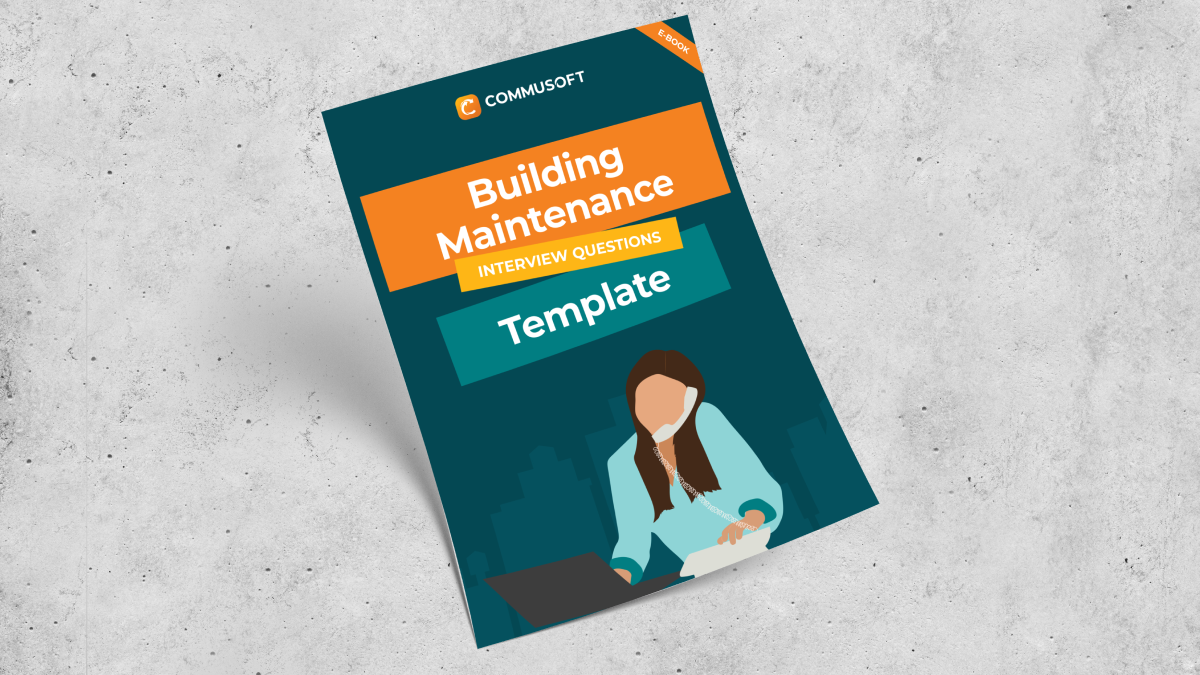You probably have vivid memories of your best and worst customer experiences, we all do.
So it’s no surprise to hear that customer service plays a crucial role in the success of any business, and the HVAC industry is no exception.
By providing exceptional HVAC customer service, you’ll see consistent customer satisfaction, foster long-term client relationships, and find new ways to grow your HVAC customer base.
Whether you’re an HVAC technician, contractor, or business owner, this article will explore eight valuable steps you can take to help improve your HVAC customer service and create a positive experience for your clients.

The Importance of HVAC Customer Service
Within the HVAC industry, providing great customer service is necessary if you want to stand out and be welcomed into clients’ homes. HVAC customer service refers to the support, assistance, and overall experience you offer to your clients throughout interactions with their HVAC systems and your business.
It involves various aspects including:
- Prompt response times
- Effective communication skills
- Knowledgeable advice
- Personalized attention
The reality is that the average customer will have a hard time telling good work apart from great work, but they will easily tell you which HVAC company had the better experience. This can make the difference between a small, one-off job and a long-term high-value customer who might also recommend you to other people.
What’s more, if you do a lot of service work, the jobs are pretty similar and nothing another company can’t do, usually. So, offering the best customer service in your area will be a big advantage and help you stand out from the competition.
So, how do you know whether your HVAC customer service is up to the task?
Assessing Your Current Customer Service Processes
To improve your customer service, you should always start by assessing your current practices. Use your reporting software to gather the data or try building a KPI tracking sheet. This evaluation allows you to identify areas of strength, pinpoint weaknesses, and gain valuable insights into your customers’ experiences.
By conducting a thorough assessment of your HVAC customer service operations, you can devise a plan that creates effective upgrades and enhances overall customer satisfaction.
Evaluating Existing Customer Service Practices
The first step in assessing your HVAC customer service is to evaluate your existing practices. Take a comprehensive look at your customer service processes, policies, and interactions with clients. Consider the following aspects:
- Response Times (How quickly do you respond to customer inquiries?)
- Types of Communication (Phone support, live chat, email, etc…)
- Professionalism (Are your field technicians respectful and courteous?)
- Conflict Resolution (How do you deal with complaints or issues?)
- Reviews and feedback (What is your average score?)
Identifying Strengths and Weaknesses
After evaluating your current HVAC customer service practices, it’s important to split them into strengths and weaknesses. This step allows you to focus on areas where you excel and address areas that need a revamp.
Strengths:
- Identify aspects of your customer service that are performing well.
- Quick reply times.
- Knowledgeable and helpful technicians.
- Hassle-free problem resolutions.
Learning about and recognizing the strengths of each department can help you find new ways to promote your services and can create a positive company culture.
Weaknesses:
- Identify the areas where your customer service falls short.
- Not keeping appointment times.
- Inconsistent communication.
- Ignoring unresolved customer issues.
While mistakes may happen, finding weaknesses enables you to start improving those areas of your customer service.
Gathering Customer Feedback and Insights

To gain a deeper understanding of your customer’s experiences, you’ll have to get them to write a review or have a personal conversation with them to gather their feedback and insights.
There are several methods you can use to collect this important information:
- Surveys (After every completed job, provide the client with a survey that asks them to rate their experience)
- Online Reviews (Monitor and respond to Google and social media reviews)
- Suggestion Forms (Provide a form on your website that encourages customers to share their thoughts and suggestions)
- Customer Interviews (If a customer had a great or poor experience, consider interviewing them for a testimonial or info on what went wrong)
By gathering customer responses, you can identify patterns, trends, and specific areas that need refining in your HVAC customer service (for example, a handful of clients could want access to a self-service portal for scheduling and invoicing).
The information you collect should be a valuable guide when implementing changes to deliver a customer experience that separates you and your product from the competition.
8 Steps to Improve Your HVAC Customer Service
Delivering above and beyond HVAC customer service requires a dedicated approach and a commitment to always finding ways to improve. By implementing the following eight steps, you can amplify your customer service practices, foster strong client relationships, and build a community that keeps coming back to your business for their HVAC needs.
1. Train and Empower Frontline Staff and Technicians
Your frontline staff and technicians will usually be the face of your HVAC business. Investing in their training and career growth is crucial for a positive work environment and delivering excellent customer service.
If you’re able to provide comprehensive training programs that focus on technical knowledge, communication, and customer service practices, your employees will be able to easily operate as a unified team to complete work orders and resolve any issues promptly.
2. Enhance Communication Channels
Clear and effective communication is the backbone of outstanding customer service. Go through your current communication channels and ensure they are convenient and accessible to any customer needs.
Consider offering multiple channels such as phone calls, email, live chat, and social media support. Consider implementing systems to track and prioritize customer inquiries, ensuring timely and personalized responses.
3. Prioritize Transparency and Honesty
Always operating with transparency and honesty is one of the best ways to build trust and credibility with your customers. Be transparent about pricing, service timelines, and any potential challenges or limitations when in the field.
Avoid overpromising and underdelivering. If unexpected issues arise, communicate proactively with customers to provide updates or solutions. They’ll usually appreciate your honest and being kept in the loop.
4. Personalize the Customer Experience
Every customer is unique, and personalizing the customer experience can significantly impact their satisfaction and loyalty. You should collect and maintain accurate customer data.
For example: how they found out about your business, their service history, and communication preferences.
Try to use this information to tailor your interactions and offer personalized recommendations. Address customers by their name, remember past conversations, and anticipate their needs, these small gestures of personalization can make a big difference.
5. Implement Technology Solutions

If you aren’t already, you should be leveraging HVAC business software to build on and streamline your customer service processes.
Implementing a customer relationship management tool to centralize customer information and track interactions.
Utilizing appointment scheduling and real-time data software to optimize technician routing and minimize wait times.
Offer an online portal where customers can access account information, request service, and view appointment or warranty details. Technology solutions boost efficiency and convenience for both your customers and your staff.
6. Measure and Monitor Customer Service Performance
To offer the best HVAC customer service, you need to measure and monitor your performance. Apply key performance indicators (KPIs) to analyze customer service metrics such as response times, customer satisfaction scores, and first-time fix rates.
Use customer feedback, surveys, and positive (or negative) reviews as additional sources of insight into your performance. Regularly reviewing these metrics and responses will help you identify areas where you aren’t living up to expectations.
7. Foster a Customer-Centric Culture
Create a customer-centric culture within your HVAC business by instilling a mindset of prioritizing customer needs and satisfaction. Foster a work environment that encourages open communication, collaboration, and empathy towards customers.
Recognize and reward employees who consistently take the time to deliver exceptional customer service, as it will help set a great example for the rest of your team members. By fostering a customer-centric culture, you set the foundation for consistent and outstanding customer experiences.
8. Continuously Focus on Improving
Improving your HVAC customer service is an ongoing battle. Regularly assess your practices, gather customer feedback, and identify areas of strength (or weakness). Encourage feedback from both customers and employees while being receptive to criticisms or suggestions.
Stay updated with industry trends, customer expectations, and emerging equipment or technologies to remain competitive and grow your business. Embrace a mindset of continuous development, making customer service excellence a core value of your HVAC business.
Residential & Commercial Customer Service
HVAC services are always going to be required for residential homes and commercial businesses. As an HVAC company, you may already be involved in both (or are gearing up to grow your service area).
But before you expand, you need to have the technology and customer service that is ready to respond to emergencies for both types of clients if you never want to breach an SLA and stay as the first choice above the competition.
For example, let’s say you’re managing a group of shared office spaces but the heat goes out on the coldest day of winter. If you don’t have access to fleet management software that can quickly reroute one of your technicians to fix the issue, you might not be as lucky when it comes time to resign the service contract.
On top of that, keeping your clients out of emergency situations with scheduled planned preventive maintenance on their systems is a great way to improve customer service as you’ll be offering peace of mind in addition to your top-of-the-line services.
Different types of clients will require different customer service and knowing how to handle both of them will put your business in a great spot to maximize your client base and revenue streams.
Enhance your Customer Service with Software for HVAC Businesses
When homeowners choose your HVAC company to repair their air conditioning or heating, you’ll want to be able to listen to the voice of the customer and have the ability to answer questions or respond to concerns. If your field tech isn’t properly prepared, it could result in lost clients and revenue.
HVAC software solutions play a crucial role in enhancing service for your HVAC business customer base figures.
By leveraging specialized HVAC software, like Commusoft, you can streamline operations, communication to and from your clients, your overall customer service satisfaction rates, and more!

Anthony Vattimo
Thanks for checking out the Commusoft blog - I’ve been helping business owners improve their strategies for a few years now, so I hope you were able to take something away from the content I’ve written. Feel free to continue exploring the blog - or reach out to us with any questions!









